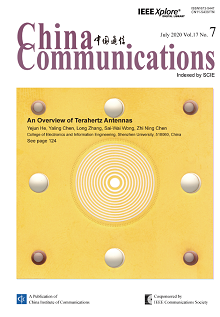REVIEW PAPER
Yejun He, Yaling Chen, Long Zhang, Sai-Wai Wong, Zhi Ning Chen
2020, 17(7): 124-165.
The terahertz (THz) antennas, which have features of small size, wide frequency bandwidth and high data rate, are important devices for transmitting and receiving THz electromagnetic waves in the emerging THz systems. However, most of THz antennas suffer from relatively high loss and low fabrication precision due to their small sizes in high frequency bands of THz waves. Therefore, this paper presents a detailed overview of the most recent research on the performance improvement of THz antennas. Firstly, the development of THz antennas is briefly reviewed and the basic design ideas of THz antennas are introduced. Then, THz antennas are categorized as metallic antennas, dielectric antennas and new material antennas. After that, the latest research progress in THz photoconductive antennas, THz horn antennas, THz lens antennas, THz microstrip antennas and THz on-chip antennas are discussed. In particular, the practical difficulties for the development of THz antennas are discussed with promising approaches. In addition, this paper also presents a short review of the process technology of THz antennas. Finally, the vital challenges and the future research directions for THz antennas are presented.
